John Hurrell – 2 August, 2012
Caryline Boreham's elegant coloured photographs of prison, hospital and airport interiors are oddly beautiful - yet they disturb, profoundly. We see no people at all while observing each room's glossy grey-green walls, stark lighting and the simplest of furniture or tape barriers. The architecture, designed for easy observation, has a chilling impersonality.
In this exhibition we have a curious blending of both formal and narrative qualities, with the bringing together of a photographer and a painter who examine light on walls and the nature of coerced confinement.
Caryline Boreham’s elegant coloured photographs of prison, hospital and airport interiors are oddly beautiful - yet they disturb, profoundly. We see no people at all while observing each room’s glossy grey-green walls, stark lighting and the simplest of furniture or tape barriers. There is a creepy beauty in these clinical settings designed to restrict movement. The architecture, designed for easy observation, has a chilling impersonality while within the range of photos, some images have a pervading warmish pinkish light, others an icy grey ambience. We try to imagine the sensation of spending a lot of time in such places.
Nicola Holden’s paintings accompany Boreham’s imagery well - the latter serving as ‘holes in the wall’ setting up stories. Holden’s paintings in comparison are simple stretchers bearing translucent white cotton through which you can study the wall behind and the bars of wood supporting the thin fabric. Sometimes the inner sides of the stretcher are painted a hot fluoro orange, or else the front sides facing the viewer a dark mauve. Occasionally both colours appear together: an intense combination where the penetrating orange gains impetus from the weight of the purple.
So here Holden is throwing bright colour backwards to bounce off the white walls, or else aiming dark tones forward straight into the face of the viewer. The thin cotton seems a little porous and with the work of Boreham nearby, could even be a bandage. One set of works with four stretchers, each with its own colour on its inner bar sides, has beading on the top edges. It ensures that the taut cotton floats well clear of the front white planes that hover in front of the coloured linear rectangles.
The back reflections activate the gallery wall in a positive way. In fact compared to the bland Boreham-depicted walls these planes for exhibiting become celebratory with these gently alive paintings. The walls and paintings collaborate together, each needing the other in a symbiotic relationship.
A surprising but imaginative pairing, Boreham and Holden resonate well. Worth exploring.
John Hurrell

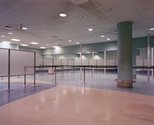
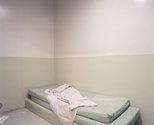
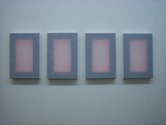
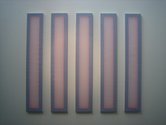
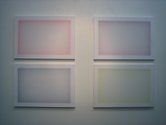
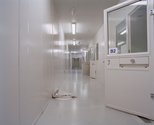
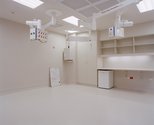

 Two Rooms presents a program of residencies and projects
Two Rooms presents a program of residencies and projects Advertising in this column
Advertising in this column



This Discussion has 0 comments.
Comment
Participate
Register to Participate.
Sign in
Sign in to an existing account.